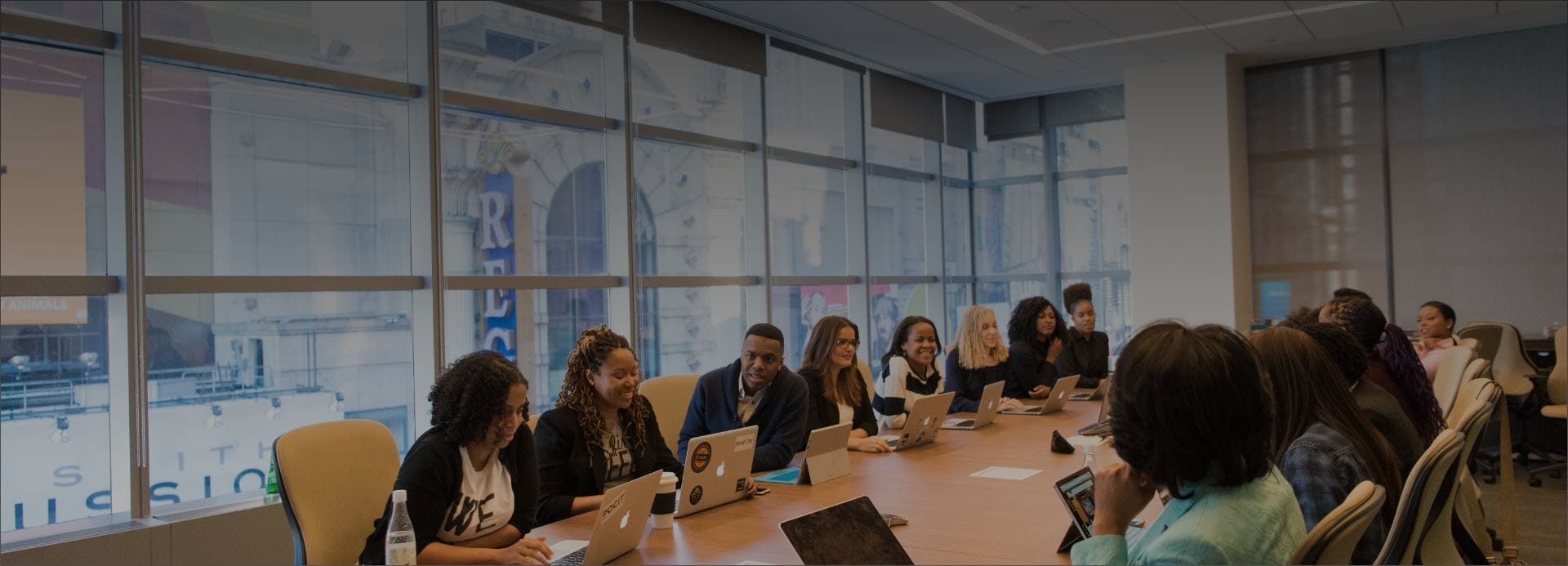The “No-Decision” Problem
Indecision is the killer of B2B revenue. In a landmark study that analysed 2.5 million recorded sales conversations, Harvard Business Review found that 40%–60% of what appeared to be qualified deals fell through because, plain and simple, the customers never made a decision. They didn’t defect to a competitor. Instead, they dug in where they were – paralysed by risk and complexity.
Traditional research hardly helps to alleviate that paralysis, as most survey work fails to reach the small number of executives who have budget authority. And the math gets worse when you throw in the stakeholder sprawl. Gartner research suggests there might be six to ten people in the typical B2B buying committee, each with four or five information sources they must reconcile. The more voices at the table, the faster momentum can melt down into analysis paralysis. Only one senior hold-out is needed to change an opportunity card from “late stage” to “no decision”.
The ability to understand the real strategic concerns of your market, map out the decision makers in your buying process, and understand how decisions get made is what enables your sales leaders to push the right buttons to move deals forward. The challenges is getting through to those senior people and engaging with them.
Breaking Through Gatekeepers: An Executive Access Model
Muscle to Match Ambition
Connecting with hard-to-reach leaders is a game of capacity, not hope. If you’re conducting a CATI (computer assisted telephone interviewing) study, you need capacity to break through. Every seat should be supported by the latest technology, enabling thousands of outbound dials per day, with supervisors able to view scripts, compliance prompts, and call recordings in real-time. Scale and capability count when diaries open for ten-minute intervals at odd times. You need enough trained interviewers ready to jump on the opportunity when an assistant says, “The CIO can talk – now.”
Finance-Fluent Interviewers
Capacity, on its own, will not earn a second of C-Suite attention. Before they even pick up a phone, interviewers should first understand basic business terminology and concepts such as cash-flow analysis, balance-sheet levers and KPIs in the target audience’s relevant industry. This level of financial fluency enables interviewers to pivot from their structured call script during a call to talk about capital allocation or regulatory risk – the types of topics that prompt busy executives to keep talking rather than delegate the interview to a subordinate.
Global Reach, Local Nuance
Wherever your interviewers are based, the executives being interviewed may sit on the other side of the world. A multi-lingual roster which can support common business languages like Mandarin, Japanese, German, French, and Spanish is crucial for global studies. This allows for a single methodology to be used across North America, EMEA, and Asia-Pacific without loss of tone or technical accuracy. Regional quotas are filled in the target audience’s local business hours and then merged into a master dashboard overnight, a distinct advantage when a global product council needs answers before their next sprint planning call.
Designing Research the Boardroom Respects
From Polite Opinions to Strategic Intelligence
Executives do not care which colour button users prefer – they care about what it means if the wrong one is chosen and how this will impact EBITDA. Good executive studies seeking to help companies understand their offers and how they are viewed in the market focus on three branches of inquiry:
- Cost of Delay – What is the financial exposure if a particular solution is deferred?
- Risk Appetite – What legal, operational or reputational risks are most central to their decision-making?
- Success Metrics – How will the project sponsor be able to demonstrate return on investment to the board?
Sampling by Authority, Not Title
Job titles don’t tell the whole truth. A “VP” in an Australian SaaS start-up could control less budget than a “Manager” within a global bank. Samples should be stratified by revenue band, P&L ownership, and final sign-off authority. Each recruit should be verified against corporate registries or LinkedIn’s Sales Navigator, meaning you don’t fall into the all too common trap of interviewing senior-sounding spectators. Instead, the senior leaders whose opinions you want to uncover should include:
- C-suite executives – CEOs, CFOs, CTOs, CMOs, CHROs – the ultimate strategic authorities.
- Department heads – Key decision-makers responsible for functional areas
- Business owners – Key decision-makers
- Shareholders and investors – Shareholders, board members, and industry partners who impact strategic direction.
- Functional leaders – Senior figures across Marketing, Sales, IT, Finance, HR, and Operations
Wording that Withstands Review
Every B2B study should be reviewed for balanced wording and respondent anonymity in accordance with the terms of ISO 20252:2019. That rigour helps avoid leading wording and, just as importantly, protects clients from unintentionally revealing long-term competitive intent. Trust is key when talking to senior leaders in large organisations.
High-Touch CATI: Turning a Ten-Minute Slot into Board-Level Intelligence
Securing a CFO or CTO for a 15-minute call starts long before the phone rings. Four ingredients consistently raise the hit-rate.
1 | Invite with a clear value promise
Executives say yes when the request is concise and the payoff obvious. A recent roundup of C-suite research tactics notes that leaders respond to industry-benchmark feedback, early sight of aggregated results, or the chance to influence an offer they may later buy. The initial e-mail (or assistant call) therefore does three things in 120 words or less:
- States the business question (“We’re mapping how banks prioritise AI spend in 2026”)
- Confirms confidentiality (see NDA below)
- Offers a give-back (“You’ll receive a two-page benchmark of peer trends”).
2 | Remove friction with NDAs and scheduling links
Time-poor leaders dislike paperwork ping-pong. Best-practice B2B agencies have moved to pre-uploaded NDAs inside the scheduling flow; once the executive e-signs, a calendar invite drops automatically. For global studies, a CATI platform with 24-hour coverage matters. Matching interviewer rosters to the sparse windows when high-value respondents are actually free is crucial. Just as important is to be exactly on time for the call.
3 | Run the call like an investor briefing
Best practice suggests running the interview like an investor call. Open with a 60-second rapport-builder, then signal respect for time by outlining the agenda up front. A proven structure is:
- Warm-up (2 min) – role, current priorities.
- Strategic frame (5 min) – risks/costs tied to the study topic.
- Deep dive (6 min) – ranked trade-offs, “what would stop you?” probes.
- Wrap & verify (2 min) – interviewer summarises key points; respondent corrects or confirms.
Interviewers trained in finance vocabulary can pivot when the executive drops a balance-sheet or regulatory reference, which is essential for credibility.
4 | Close the loop quickly
Executives are likelier to re-engage if they see impact. A short “thank-you & key findings” memo – sent within two weeks – meets The Research Society guidelines on incentives and demonstrates that the call was more than a box-tick.
Omnichannel Methodologies that Get Executives to Respond
Secure Online Modules: Quant Depth Without The Drag
Sometimes projects require a quant backbone – such as a conjoint, a max-diff, or a prioritisation matrix. Senior leaders receive an email with a two-factor log-in, an estimated time to completion (always < 10 minutes), and a commitment date. If the respondent drops off at page 3, the system should alert an interviewer, who can offer guided completion by phone, which redeems a potentially valuable data point.
The online questionnaire should be split into brief, uncluttered pages that mirror the slide format senior leaders see in board packs. Each page offers a one-glance chart or definition for context, followed by a drag-and-drop slider. If the topic is financial, that slider is anchored to revenue bands – e.g. “under $1 m,” “$1–5 m,” “$5–10 m,” “over $10 m.” When the discussion shifts to something else – like implementation effort or regulatory risk – the anchors switch to equally concrete ranges such as “< 1 month → > 12 months” or “no risk → board-approval risk.”
Swapping vague agree/disagree wording for real-world metrics lets busy executives answer in the language they use every day without wading through dense text.
Face-to-Face Roundtables: Collective Blind-Spot Removal
For mergers, regulatory hearings, or shareholder canvassing, group dynamics can matter. Senior-only workshops – usually made up of 6-10 decision-makers – following Chatham House Rules are extremely valuable in these cases. Moderators foster two-way group dynamics through real-time sentiment polling and structured provocations (e.g., ‘What risk would this deal die on first?’) to expose hidden blind spots. Insights are captured through anonymous online transcripts and confirmed in short follow-up one-on-ones.
Types of Executive Studies that Lead to Real Insight
Typical B2B insight programmes draw on several specialist study types:
- Shareholder-voting research – gauges likely support for resolutions before they hit the AGM agenda.
- Customer and supplier feedback – spotlights service gaps and collaboration pain points along the value chain.
- Brand awareness and positioning audits – reveals how target markets rank the company against key competitors.
- Employee sentiment and engagement surveys – uncovers cultural strengths and retention risks that influence performance.
- Stakeholder soundings with regulators, industry bodies and partners – clarifies external expectations and emerging compliance pressures.
Investor & Shareholder Voting Research
Well before an AGM, boards need a clear sense of whether critical motions – such as a new remuneration scheme or a climate-action target – will secure enough votes. The process usually starts with confidential phone interviews among the company’s 50 largest institutional investors. It then moves to a secure, NDA-protected online survey where those investors rank alternative versions of the proposed policies (for example, different bonus caps or emissions-reduction timelines).
Shareholder communication programmes which canvass retail investors or smaller institutional holders whose low share counts often keep them off proxy-solicitation platforms, primarily rely on telephone outreach. Live calls can confirm voting intentions, surface any confusion about the resolution wording and give issuers a final opportunity to clarify the board’s position. Together, these steps spotlight any flashpoints weeks before proxy forms are issued, giving leadership time to refine the messaging or adjust the wording.
Product-Market Pivots Before Code is Written
By interviewing senior executives in the very companies that would ultimately purchase its software, a global software vendor gathered decision-level feedback on its roadmap. Those C-suite insights prompted a product pivot that took the new release to market 40 percent sooner and saved $2 million in development costs – proof that executive-focused research can translate directly into speed and budget gains.
Leadership-Level Employee Research
Organisational culture is set by leadership, yet most engagement surveys capture only frontline perspectives. Conducting interviews with division presidents and founders uncovers the unwritten norms – the real “ways we do things.” Those insights help HR teams design targeted initiatives – policy tweaks, recognition systems, leadership coaching – that tackle root causes and lead to measurable improvements in morale, collaboration and performance.
Five Due-Diligence Questions Before You Order Executive Research
- Can the partner access validated decision holders? Ask them for hit rates on previous executive quota – this is not brochure material.
- How quickly can the insights get to board-pack format? CFOs will not wait for a presentation three months later.
- What is the validation that catches scripting, transcription or weighting error? Looking for a dual-listen target and automatic logic checks.
- Does performance flexibility allow for different time zones? A 7am New York dial is a midnight Sydney slot.
- Is the methodology used independently audited (ISO 20252:2019) and compliant with privacy law? Procurement teams will be on this – better to know now.
If a supplier answers in detail, you are heading in the right direction. If they hedge, keep shopping.
From Inaction to Action
In B2B, opportunity cost is far greater than discount. Deals that become “no decision” or “walking dead” suck countless quarters of pipeline effort out of your business and cede market share to incumbents. Executive insight can be one of the cures. Numbers and anecdotes, explicitly collected from the leaders who approve budgets, manage risk, and consider strategic fit can paint a vivid picture enabling your marketing, sales and product leaders to push the right strategic buttons.
About TKW Research
With over 500-seat CATI seats, finance-fluent interviews, and ISO-enabled governance, TKW Research provides executives with insight that becomes operationally actionable. The result is intelligence that will endure board scrutiny and fast-track decisions regarding product, price, or partnership.










